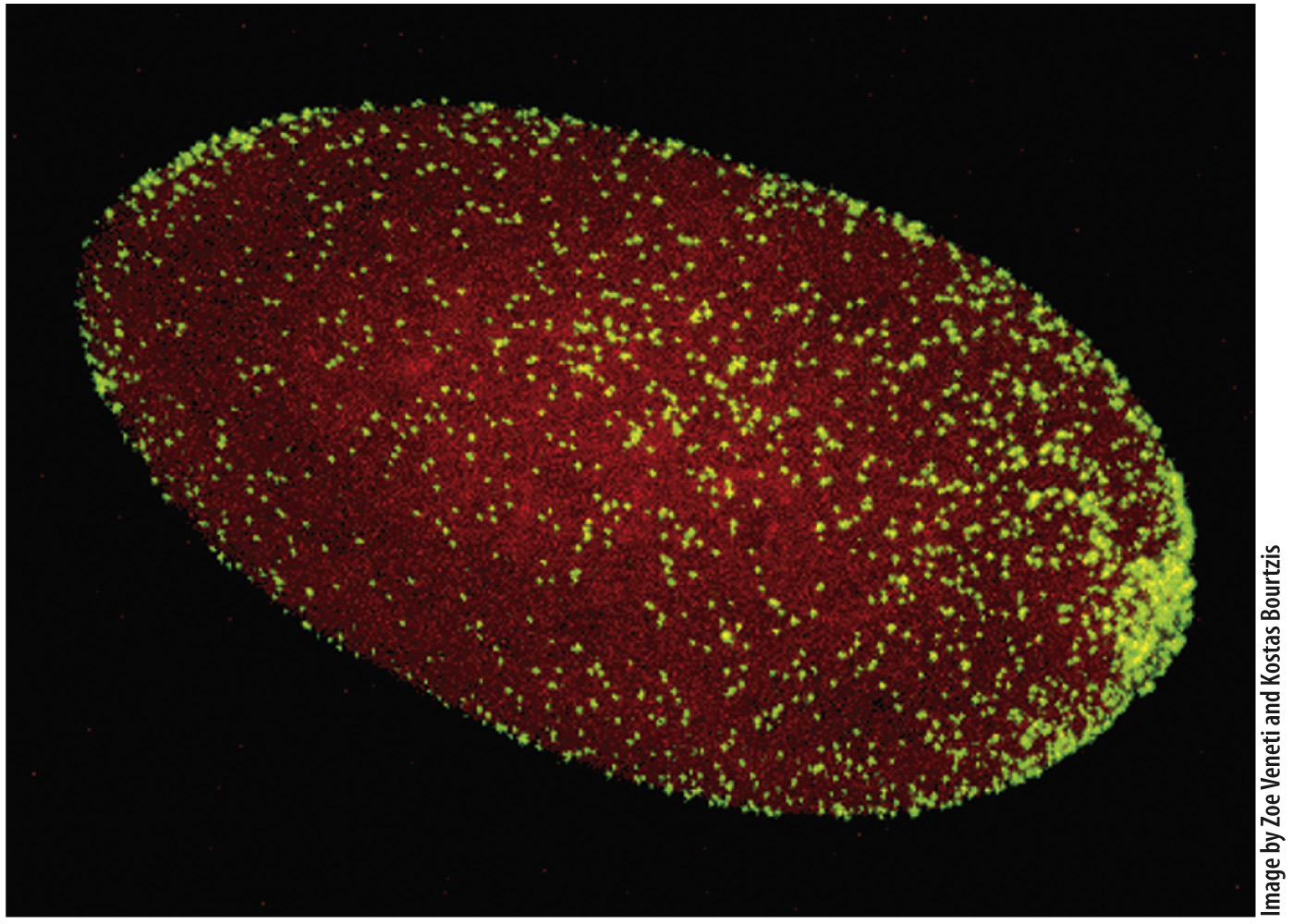Prokaryotes have coevolved with eukaryotes.
Even after the rise of eukaryotic cells and, later, plants and animals, Bacteria and Archaea have remained essential to the functioning of biogeochemical cycles and hence to the maintenance of habitable environments on Earth. Prokaryotic organisms have also radiated into the many novel environments made possible by eukaryotes. We noted earlier that bacteria fix nitrogen in nodules formed on soybean roots. Soybeans and nitrogen-fixing bacteria evolved together, a process called coevolution.
Coevolutionary relationships between prokaryotic microorganisms and eukaryotes are common in nature. As noted earlier, cows metabolize grass with the help of methanogenic archaeons in the rumen, a specialized digestive organ. The microbes enable the cow to gain nutrition from plant materials that could otherwise not be digested, and the benefit to the microorganisms is a steady supply of food. Similarly, clams that live near methane-rich vents in the Gulf of Mexico have evolved specialized organs that house methane-oxidizing bacteria, providing them with a reliable source of nutrition.
Bacteria can affect animal behavior as well as nutrition. For example, some squid species attract mates by emitting light from specialized organs full of bioluminescent bacteria (Case 5). The bacteria provide the squid with a mechanism for communication in the dark deep-sea environment, and the squid feeds the bacteria. Interestingly, many different kinds of bacteria live in the waters that surround the squid, but only the bioluminescent species accumulates in the squid’s light organ. The squid apparently sends molecular signals that attract just those bacteria.
Bacteria can also influence animal reproduction. Earth supports more than a million species of insects, and perhaps two-thirds of these harbor the proteobacterial parasite Wolbachia within their tissues. A heterotroph that gains nutrition by metabolizing organic compounds supplied by its host, Wolbachia infects its host’s reproductive tissues and passes from one generation to the next in the host’s eggs (Fig. 26.22). Remarkably, many Wolbachia strains alter host reproductive cells so that the insect host can successfully reproduce only with partners infected by the same Wolbachia strain. Because Wolbachia cells are transferred by eggs and not sperm, they have little use for males. Consequently, some cause male host embryos to die, thus increasing the proportion of females. Others cause genetically male embryos to develop as females, or enable eggs to develop into female embryos without fertilization.

FIG. 26.22 A large population of Wolbachia bacteria (fluorescing green) in the embryo of a fruit fly. Wolbachia can influence the development and reproductive biology of their animal hosts.
Wolbachia have another effect on their insect hosts that is highly relevant to human health: They commonly inhibit infection by viruses and the eukaryotic parasites that cause malaria. Recent research shows that Wolbachia populations in some fly species protect their hosts against infection by RNA viruses. Scientists introduced these bacteria into mosquitos that transmit dengue fever, a tropical disease that infects 50–100 million people each year. The Wolbachia-infected mosquitos were strongly resistant to the Dengue virus, which causes dengue fever. Moreover, when introduced into the wild, these virus-resistant forms rapidly expanded to dominate regional mosquito populations. Wolbachia parasites present a possible path to controlling dengue fever, malaria, and other insect-borne diseases.
All around us, plants, animals, and microorganisms live in intimate association—sometimes to our detriment, but commonly in mutually beneficial relationships that influence how we grow, develop, eat, and behave. Humans are no exception.
